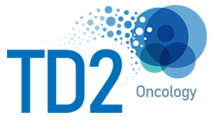Epigenetic-Based Combinatorial Therapy is Synergistic in KRAS/LKB1 Mutant Non-Small Cell Lung Cancers
Authors: Matthew Zucker, Kendra Devore, Logan Chesney, Gregg Hirschfeld, Annissa Reyna, Betsy Linnane, Joseph Mascarenhas, Maggie Murray, Allan Miller, Paul Gonzales, Stephen Gately

Abstract: KRAS and LKB1 mutations (KL) in non-small cell lung cancer (NSCLC) patients often results in poor prognosis, a high tumor mutational burden, and resistance to conventional therapy. The metabolic changes with these mutations can create unique vulnerabilities to be targeted therapeutically. HDAC inhibition has been reported as a promising approach to overcome MEK inhibitor resistance in animal models of melanoma, pancreatic cancer, and KL mutant NSCLC. Inhibition of HDAC3 and HDAC6 have independently been shown to have therapeutic activity in KL NSCLC. We now report on the activity of two novel HDAC3/6 inhibitors (GB-1101 and GB-3103) in cell culture and mouse models of human KL(A549) compared to KRAS/TP53-mutant NSCLC (KP) (CALU-6) alone and combined with the MEK inhibitor trametinib. GB-1101 inhibits HDAC3 and HDAC6 and GB-3103 inhibits HDAC 1,3,6,10. SynergyFinder multi-dose combination data analytics showed synergistic interactions for both GB-1101 or GB-3103 when combined with trametinib in KL mutant A549 cells with maximum synergy scores % of fl = 9.24 and 4.21, using zero interaction potency (ZIP) for synergy scoring. GB-1101 or GB-3103 when combined with trametinib in KP mutant CALU-6 cells did not demonstrate synergistic interaction with synergy scores of fl = -1.58 and -0.53, respectively. Mice were inoculated subcutaneously with 5.06 A549 or CALU-6 cells and treatment with GB-1101 (75 mg/kg qd, oral), GB-3103 (5.0 mg/kg qd, subcutaneous), trametinib (1.0 mg/kg qd, oral) and each drug in combination with trametinib was initiated when tumors reached an average of 120mm3. Single agent and combination treatments were well tolerated. GB-1101 exhibited tumor growth inhibition (TGI) of 33.0% in the A549 (KL) compared to 8.5% in CALU-6 (KP). In combination with trametinib, GB-1101 showed increased activity (TGl=92.7%) compared to trametinib alone (TGl=69.5%) in KL mutant A549. In KP mutant CALU-6 tumors, combination benefit was not observed; combination of GB-1101 and trametinib yielded a TGl=93% equivalent to trametinib alone (TGl=91%). GB-3103 resulted in a TGI of 66.7% in the KL mutant A549 and TGI= 55.9% in KP mutant CALU-6. In KL mutant A549, GB-3103 in combination with trametinib, showed increased inhibition (TGl=94.3%) compared to trametinib alone (TGl=69.5%). No combination benefit was seen for GB-3103 in KP mutant CALU-6 with the combination treatment TGI of 93.1% compared to trametinib alone TGl=90.7%. These results confirm and extend the finding that for KL mutant NSCLC, HDAC3/6 inhibitors show therapeutic benefit in combination with trametinib that is not observed in KP tumors. These data reveal a promising epigenetic-based combinatorial strategy for treating lung cancers harboring concurrent KRAS/LKB1 mutations, a path for clinical translation, and the potential to improve treatments for KRAS/LKB1 mutant NSCLC patients where there are currently no robust therapeutic strategies.
Download Now
CONTACT US
Get Started.
Have questions about how TD2 can assist with your regulatory needs? Reach out to our expert staff today to get started.


